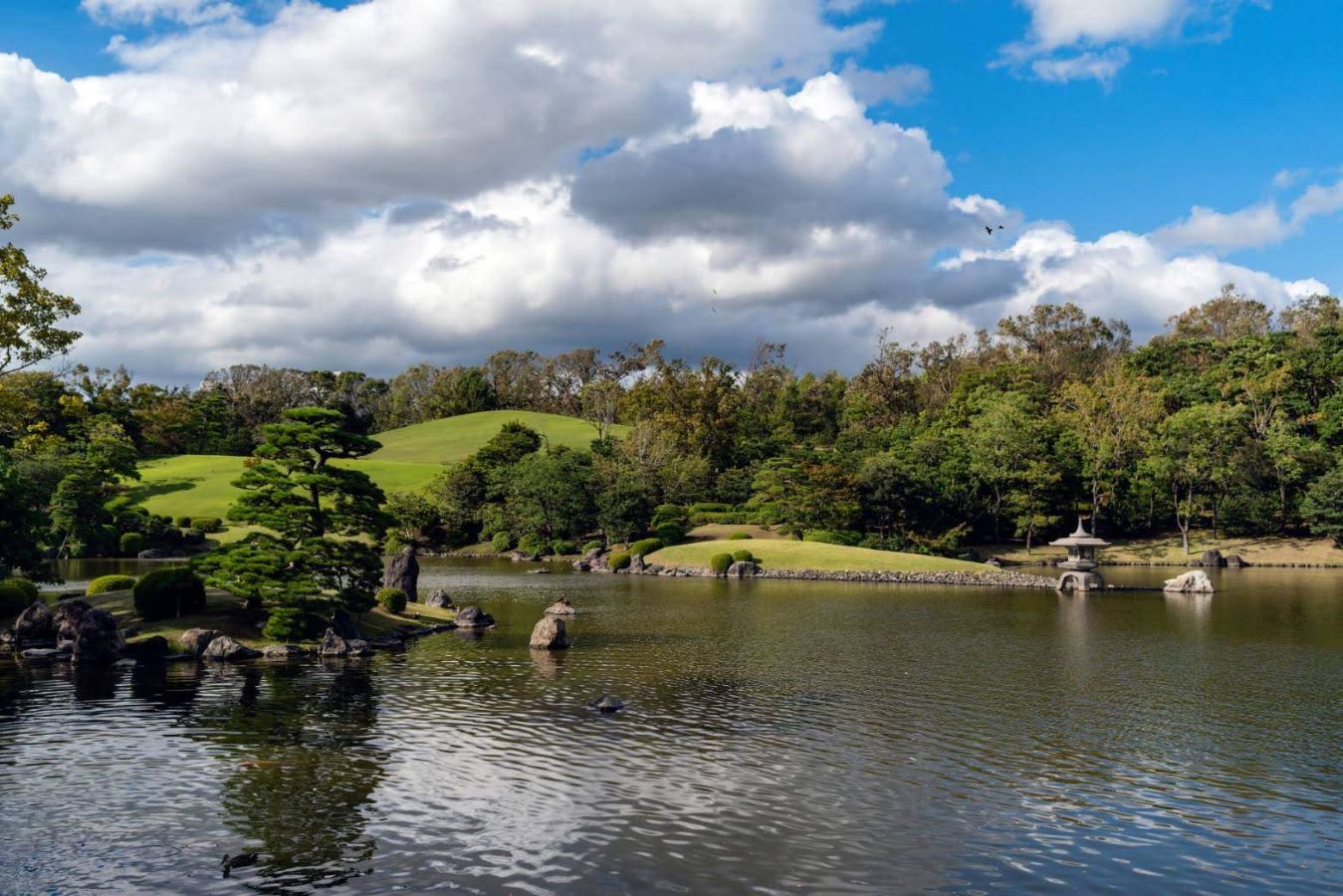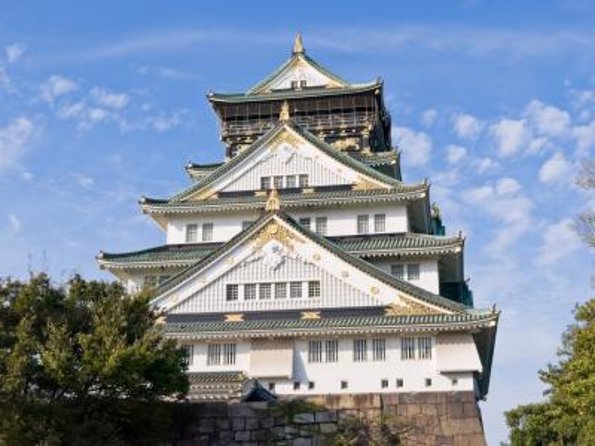Osaka Expo ’70 Park was built on the site of the 1970 World Exposition, which was the first international exposition held in Asia. It spans over 260 hectares and is home to many attractions, including the iconic Tower of the Sun, which was the symbol of the 1970 World Exposition.

The tower’s unique design is a must-see for anyone visiting the park. The park also features a Japanese garden, a folk crafts museum, and sporting facilities that were once parking lots during the 1970 World Exposition.
Key Takeaways
- Located in Suita, about ten kilometers north of Osaka.
- Built on the site of the 1970 World Exposition, which was the first international exposition held in Asia.
- Features the iconic Tower of the Sun,
- Has a great Japanese garden and a folk crafts museum.
- Take the Midosuji Subway Line from central Osaka to Senri-Chuo Station and transfer to the monorail.
History

The Osaka Expo ’70 Commemorative Park, also known as Banpaku Kinen Koen, was built to commemorate the Japan World Exposition held in 1970. The event was held to showcase Japan’s technological advancements and cultural heritage to the world. The park was designed by architect Kenzo Tange and opened to the public in 1973, three years after the expo ended.
The park is expansive with attractions such as a wonderful Japanese Garden, Natural and Cultural Gardens, and ofcourse the Tower of the Sun. This iconic, giant white statue , designed by artist Taro Okamoto, was the symbol of the expo and was meant to represent the past, present, and future of Japan.
Over the years, the park has undergone several renovations and improvements to maintain its beauty and functionality. In 1990, the park hosted the International Garden and Greenery Exposition, which added new gardens and facilities to the park.
Attractions

Here are some of the top attractions:
- Tower of the Sun: This iconic tower is the symbol of the park and was designed by artist Taro Okamoto. Visitors can explore the inside of the tower and see the artwork and exhibits.
- National Museum of Ethnology: This museum showcases the culture and traditions of different countries around the world. Visitors can learn about different customs, clothing, and artifacts from various regions.
- Japanese Garden: This serene garden is a beautiful spot to relax and enjoy nature. Visitors can stroll through the garden and see the various plants, trees, and ponds.
- Expo ’70 Pavilion: This pavilion was built for the 1970 World Expo and has been preserved as a historical monument. Visitors can see exhibits and artifacts from the Expo and learn about its significance.
- Nifrel: This innovative aquarium combines art and technology to create a unique experience. Visitors can see marine life and learn about their habitats and behaviors.
In addition to these attractions, Osaka Expo ‘70 Park also has other activities and amenities, including:
- Ferris Wheel: The park has Japan’s largest Ferris wheel, which offers stunning views of the park and the city.
- Shopping: There are several shopping malls and stores in the park where you can shop for souvenirs and other items.
- Restaurants: The park has restaurants and cafes where you can enjoy a meal or snack.
- Biking: Visitors can rent bicycles and explore the park on two wheels.
Facilities
The park is divided into several zones, each with its unique attractions and facilities. Visitors can enjoy a wide range of activities in the park, from lovely gardens to museums and shopping.
Gardens

Going along the stream from west to east, visitors will find four styles of gardens; the Heian Period (8th-11th century) garden, the Muromachi Period (14th-16th century) garden, the Azuchi-Momoyama Period (16th century) garden, and the modern garden. Each garden has its unique features, and you can enjoy the beauty of nature and traditional Japanese culture.
Museums
The park has several museums, including the National Museum of Ethnology, which showcases the culture and traditions of various ethnic groups around the world. The Expo ’70 Pavilion, which was built for the 1970 World Exposition, is now a museum that displays the history of the Expo and the future of science and technology. There is also a Natural and Cultural Garden Museum, which exhibits the flora and fauna of the park and the surrounding area.
Shopping and Dining
The park has several shopping and dining options, including Expo City, a 3-story indoor shopping center with over 300 stores selling Japanese and international brands. Visitors can also enjoy traditional Japanese cuisine at the park’s many restaurants and cafes.
Sports Facilities
The park has several sports facilities, including a baseball field, a soccer field, tennis courts, and a gymnasium. Visitors can enjoy various sports activities in the park, including jogging, cycling, and hiking.
Visiting Information
Osaka Expo ’70 Park is a popular tourist destination in Osaka, Japan. Here are some important details to keep in mind when planning your visit:
| Opening Hours | 9:30 am – 5:00 pm (Last admission at 4:30 pm) |
|---|---|
| Closed Days | Every Monday (Tuesday if Monday is a national holiday), December 28 – January 4 |
| Admission Fees | Adults: 250 yen, Children (6-15 years old): 70 yen |
The park is accessible by public transportation. Take the Osaka Monorail to Bampaku-kinen-koen Station or the Hankyu Railway Line to Senri-Chuo Station.
Once you arrive at the park, you can explore the various attractions on foot or rent a bicycle or a pedal boat to explore the park’s large lake. There are also several restaurants and cafes on site where you can grab a bite to eat.
The Sum Up
Osaka Expo ’70 Park should be on your to-do list for anyone interested in Japanese history, culture, and innovation. The park offers a unique blend of natural beauty, art, and technology that is sure to captivate visitors of all ages.
One of the highlights of the park is the Tower of the Sun, a towering 70-meter-high artwork that serves as the park’s most recognizable icon. Visitors can also explore the Dream Pond, where they can rent boats and paddle around sculptures erected in the water. The park’s large Japanese landscape garden is also a must-see, offering a peaceful oasis in the heart of the city.
For those interested in the history of the park and the World Expo, the Japan Folk Crafts Museum and the National Museum of Ethnology are both worth a visit. The park also offers a range of sporting facilities, including tennis courts, a baseball field, and a cycling course.
Overall, the Osaka Expo ’70 Park is a testament to Japan’s commitment to innovation and creativity.




